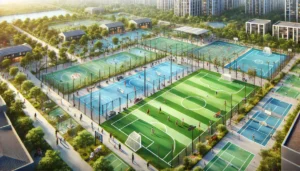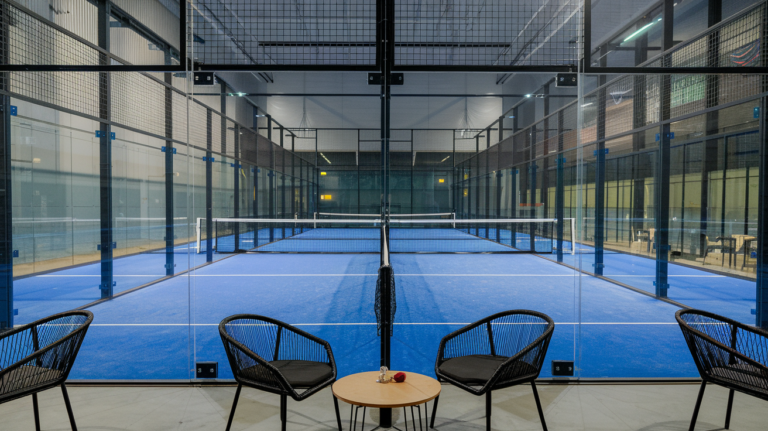
Designing a multi-functional sports complex is not just an engineering task—it’s an investment in community health and well-being. With the growing demand for sports facilities that cater to diverse needs, leading companies like Faris Al-Amal Al-Saree focus on creating spaces that blend practical functionality , sustainability , and modern technology . In this article, we’ll explore the essential steps to design a multi-functional sports complex that enhances public health, highlighting the factors that make it a vibrant space for all community members.
1. Understanding Community Needs: The Foundation of Multi-Functional Sports Complex Design
Before drafting the design, a field study must be conducted to identify the population’s needs. Do they require walking paths, football fields, indoor gyms, or yoga areas? This is where community participation in planning becomes critical. Surveys or workshops can gather input, ensuring the design reflects end-users’ desires.
Example : If a significant portion of the community is elderly, part of the complex might be dedicated to low-intensity exercises, while other zones cater to children’s activities.
2. Architectural Design: Merging Functionality with Aesthetics
Successful design balances function and beauty . Key elements include:
- Spatial Planning : Dividing the complex into zones for different activities (football, basketball, children’s games) while ensuring safe distances between them.
- Natural Lighting : Using large windows and reflective glass to enhance lighting and reduce energy consumption.
- Green Spaces : Adding small gardens or grassy areas to boost psychological comfort and air quality.
3. Sustainability: Building an Eco-Friendly Facility
Using sustainable materials is central to promoting public health. Examples include:
- Eco-Friendly Flooring : Recycled rubber materials to reduce injury risks.
- Renewable Energy Systems : Solar panels to meet energy needs and lower the carbon footprint.
- Water Management : Rainwater harvesting systems for irrigating green spaces.
4. Smart Technology for Enhanced User Experience
Integrating smart technology elevates the complex’s value and interactivity. Practical applications include:
- Mobile Apps : For booking facilities or tracking activity schedules.
- Sensors : To monitor air quality or temperature and adjust them automatically.
- Interactive Screens : Providing event updates or health tips.
5. Safety: A Top Priority in Design
Safety standards are as critical as other factors. The design must adhere to:
- Anti-Slip Flooring : Especially in wet areas.
- Clear Signage : Marking emergency exits and hazard zones.
- Surveillance Cameras and round-the-clock first-aid services.
6. Flexibility: A Complex That Adapts to Future Changes
A successful design must be adaptable to future challenges. For example:
- Adjustable stands to accommodate varying audience sizes.
- Removable or recyclable materials for potential expansions.
7. Community Engagement: Transforming the Complex into a Vibrant Hub
A successful complex becomes integral to the community’s fabric. To achieve this:
- Organize regular sports and cultural events.
- Create social spaces like healthy cafés or small libraries.
- Collaborate with schools and sports clubs to optimize facility use.
Conclusion: Why Clients Trust Faris Al-Amal Al-Saree?
At Faris Al-Amal Al-Saree , we understand that designing a multi-functional sports complex requires a holistic vision blending innovation , sustainability , and safety . With our extensive experience in delivering integrated sports projects, we guarantee solutions that meet client expectations and enhance community health.
If you’re planning to build a complex that combines functional excellence with well-being, contact us via our website or visit our headquarters to learn more about our services.



